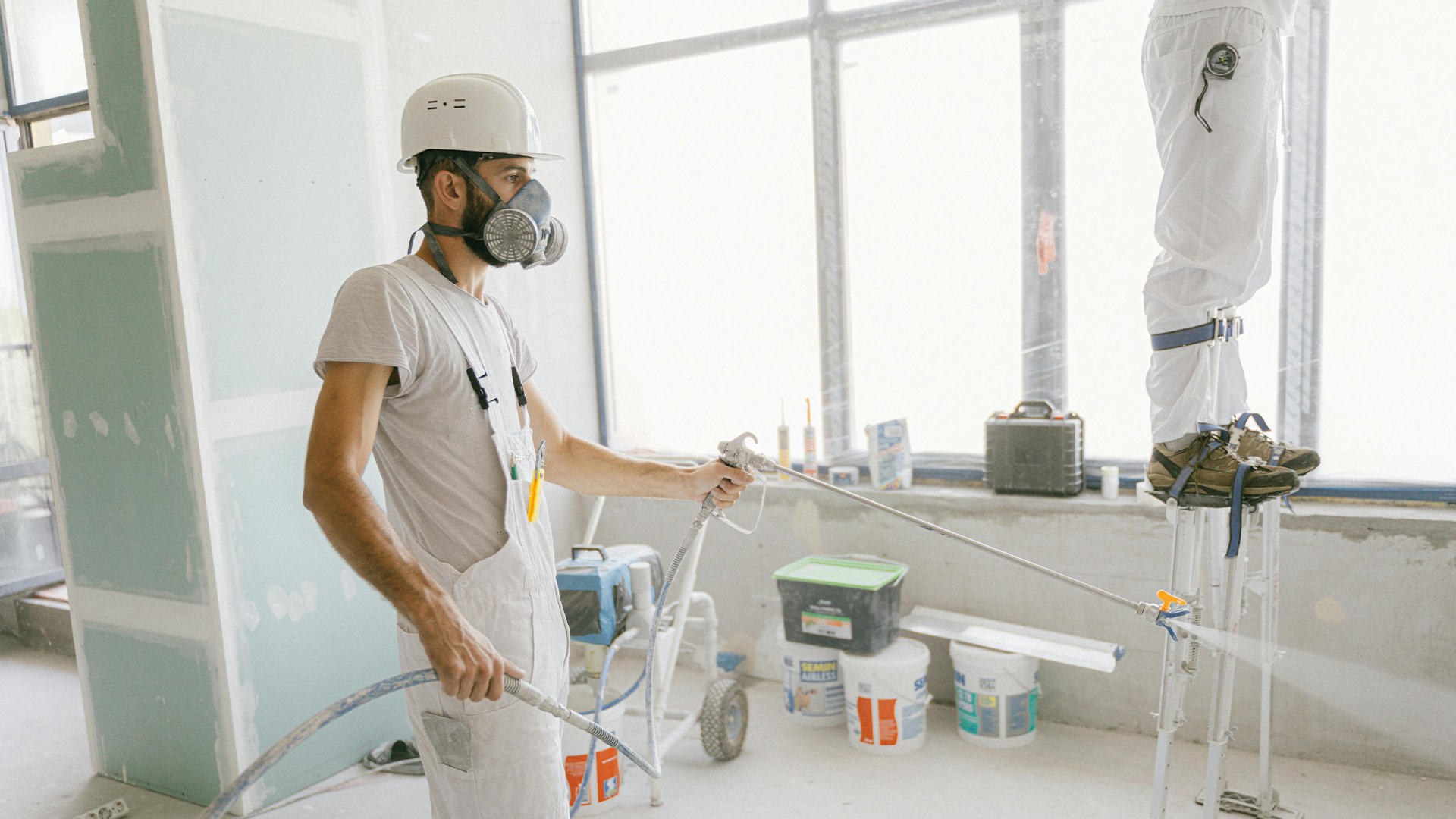Key Take Aways
You can plaster over paint—but only if the existing paint is in good condition and non‑glossy (matte or water‑based). Glossy or oil‑based paints require sanding or a bonding agent to ensure adhesion .
Preparation is crucial: surfaces must be thoroughly cleaned, any loose paint removed, glossy areas sanded, cracks filled, and possibly primed before plastering .
Application steps: mix plaster correctly, apply it in thin, even layers using a trowel, and allow full drying between coats—drying time varies by plaster type and weather conditions .
Once plastered, choose exterior wall coatings that are weatherproof, breathable, and durable—a must for coping with the UK climate .
While DIY is possible, hiring professionals (like All Weather Coating) ensures proper surface prep, plaster application, and coating quality—offering better, longer‑lasting results.
When it comes to renovating or refreshing your home, one question that often arises is whether you can plaster over paint. This query is particularly relevant for homeowners looking to improve the aesthetics of their exterior walls or to enhance their home’s weatherproofing capabilities. In this comprehensive guide, we’ll delve into the intricacies of plastering over painted surfaces, providing you with all the knowledge you need to make informed decisions for your UK home.
Understanding the Basics
Plastering is a skilled technique used to provide a smooth or textured surface to walls and ceilings. It’s a critical step in preparing a surface for painting or for applying special exterior wall coatings. However, when the surface in question is already painted, the process becomes a bit more complex.
Can You Plaster Over Paint?
The short answer is yes, but with caution. Plastering over paint can be done, but the success of this process largely depends on the condition of the existing paint and the type of paint used. For instance, plaster adheres well to matte and other non-glossy paint finishes. However, glossy or oil-based paints may prevent the plaster from bonding properly, leading to issues such as flaking or peeling over time.
Factors to Consider
Type of Paint: The type of paint on the walls significantly affects the plaster’s ability to bond. Water-based or latex paints with a matte finish usually offer a suitable surface for plastering, provided they are in good condition. In contrast, glossy, oil-based paints create a slippery surface that can prevent the plaster from adhering. In such cases, a thorough sanding or the application of a bonding agent is essential.
Condition of the Paint: The existing paint’s condition is another critical factor. Paint that is peeling, flaking, or otherwise compromised can undermine the plaster’s integrity. Before proceeding, it’s crucial to remove any loose or damaged paint and ensure the surface is stable and smooth.
Preparing Painted Surfaces for Plaster
Preparation is key when it comes to plastering over painted walls. Here are some essential steps to ensure the plaster adheres correctly:
- Clean the Surface: Ensure the wall is free from dust, grease, and any loose paint. A thorough cleaning can significantly improve the plaster’s ability to bond with the painted surface.
- Sand the Surface: Lightly sand glossy or oil-based paints to create a rougher surface for the plaster to grip onto. Be careful not to damage the underlying surface in the process.
- Apply a Primer: In some cases, applying a bonding primer can help the plaster adhere better to the painted surface. This step is particularly important if you’re dealing with glossy or non-porous paints.
- Patch Any Cracks or Holes: Before plastering, make sure to fill any cracks or holes in the wall to ensure a smooth and even finish.
The Plastering Process
Once the surface is prepared, you can proceed with the plastering process. Here are the general steps involved:
- Mix the Plaster:Follow the manufacturer’s instructions to mix the plaster to the right consistency.
- Apply the Plaster:Use a plastering trowel to apply the plaster in thin layers. It’s essential to work quickly but carefully to achieve a smooth finish.
- Let it Dry:Allow the plaster to dry completely before applying any additional layers or coatings. Drying times can vary based on the type of plaster used and the environmental conditions.
Choosing the Right Exterior Wall Coatings
After plastering over painted surfaces, selecting the right exterior wall coatings is crucial for protecting your home from the UK’s unpredictable weather. Here are a few tips for choosing the best coatings:
- Weatherproof: Opt for coatings designed to withstand the UK’s rain, wind, and varying temperatures.
- Breathable: Ensure the coating allows moisture to escape from the walls to prevent dampness and mould growth.
- Durable: Choose a coating that offers long-lasting protection to minimise the need for frequent reapplication.
Why Professional Help Matters
While DIY projects can be rewarding, plastering over painted surfaces and applying exterior wall coatings require a certain level of skill and expertise. Professional services, like those provided by All Weather Coating, can ensure the job is done right. Our team of experts can assess your walls, prepare them properly, and apply high-quality coatings that enhance your home’s appearance and protect it against the elements.
Conclusion
Plastering over paint is possible and can significantly improve the look and longevity of your home’s exterior walls. However, the key to success lies in proper surface preparation, selecting the right materials, and understanding the process involved. For homeowners seeking to ensure the best results, turning to professionals like All Weather Coating can offer peace of mind and a guarantee of quality.
Whether you’re looking to revamp your home’s exterior or enhance its weatherproofing capabilities, All Weather Coating has the expertise and services you need. Contact us or send an enquiry today to learn more about how we can help transform your property with our exceptional exterior wall coatings and weatherproofing services.





